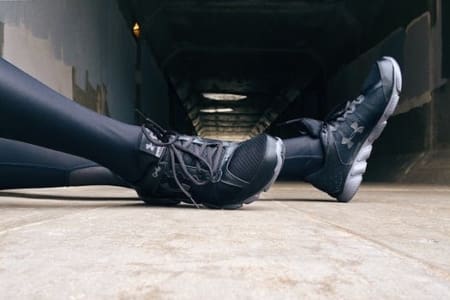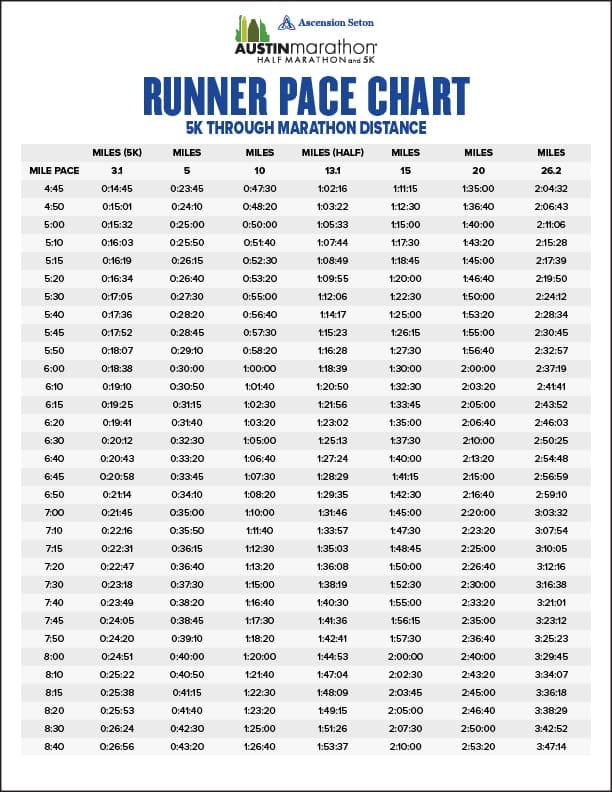Tag Archive for: Under Armour
3 Reasons to Buy Your Race-Day Shoes Now
in Blog postDon’t wait any longer to buy your race-day shoes
Runners love their shoes and will defend their favorite pair(s) as being the best. We’re big fans of Under Armour’s latest, the Flow Velociti Wind. What all runners will agree with is that you don’t wear a new pair of shoes on race day! You want your shoes to be broken in, but without too many miles. Typically, a pair of running shoes will last 300-400 miles. If it’s time to buy a new pair, do it. Buying your race-day shoes now will give you plenty of time to get used to them. This will also keep you from running in old shoes that have lost their comfort, cushion, and support. Check out the 3 reasons to buy your race-day shoes now. Then schedule an appointment with our friends at Fleet Feet Austin and let them do what they do best!
Break-in race-day shoes

Break in your shoes at least 3-4 weeks before your event.
Whether it’s a new brand or the latest iteration of your favorite shoe, it will take some time for your feet to become comfortable with a brand-new pair. Your feet and shoes should achieve a nice harmony before race day to minimize the possibility of blisters and injury. Ideally, 3-4 weeks before the event will provide enough time for you to break in your race-day shoes. Continue to include running variety in your training to help you further break in your new pair of shoes.
Maximize cushion and support
Familiarizing your feet with new race-day shoes is a part of breaking them in. As shoe technology advances, they become better-equipped with cushioning, stability, and memory foams. To maximize the cushioning support you should alternate your race-day shoes along with your current pair leading up to your event. This will keep the mileage on your race-day shoes low and allow for the most cushion and support during your event. Don’t run in them 3-4 days before your event so the cushion has a chance to recover from the most recent run.
Avoid unfamiliarity on race day

Nothing new on race day, shoes included!
Every runner has heard the following: nothing new on race day. This goes for your shoes as well. Even if they’re the same version as your old pair, they could be slightly different. No two pairs are exactly the same. Your feet will need time to adjust to the new pair. Remember: you should only run in your running shoes. Use the 3-4 week timeline, mentioned earlier, as a guide in the minimum amount of time needed to become acclimated to your new pair of shoes.
Endurance training is never easy and you have to be well-prepared. Consistency and adequate nutrition/hydration will help you in ensuring success. Comfortable, cushioned, and supportive running shoes are a part of that equation too. Just make sure that you buy what you plan to wear at least 3-4 weeks in advance. This way you can break them in, maximize cushion and support, and follow the “nothing new on race day” rule.
How Long Will it Take You to Finish a Marathon?
in Blog postKnow the 6 factors that may impact your marathon finish time
A marathon is 26.2 miles (42.2K) long. While most elite runners can finish a marathon in the 2-hour range, age group runner’s finish times vary greatly. We review the average finish times for different ages below. Runners usually have 8 hours to complete the designated 26.2-mile distance. There are several factors that can influence how long it can take you to finish a marathon. If you already know your running pace, use this helpful pace chart to help predict your finish time or set a new goal!
Training and pace
 Like every competition, preparation is critical for a marathon. The amount of training you put in every day before the race is crucial to how your body acclimatizes itself to running long distances. You can roughly calculate how long it could take you to finish a marathon by taking your mile time and comparing it with a marathon pace chart. For example, if you’re completing a mile in 15 minutes then you would likely reach the finish line in about 6.5 hours.
Like every competition, preparation is critical for a marathon. The amount of training you put in every day before the race is crucial to how your body acclimatizes itself to running long distances. You can roughly calculate how long it could take you to finish a marathon by taking your mile time and comparing it with a marathon pace chart. For example, if you’re completing a mile in 15 minutes then you would likely reach the finish line in about 6.5 hours.
If you don’t know your base pace, you can calculate it. There are tons of different pace calculators available on the internet. Another good way to figure out your base pace is to run a 5K. Your pace in the final mile is a good place to start for predicting your pace. Since you are planning a longer distance you will want to add anywhere from 30 seconds to a minute to calculate your full marathon pace.
Many marathons will have pace groups for certain times to help guide finishers. These pace times can differ from race to race but many times include the required qualifying times for the Boston Marathon. The Austin Marathon is a Boston Marathon Qualifier with hundreds of people getting their BQ each year.
- Pace groups available: 2:59, 3:05, 3:10, 3:15, 3:20, 3:25, 3:30, 3:35, 3:40, 3:45, 3:50, 3:55, 4:00, 4:05, 4:20, 4:35, and 4:50
- The pace group leaders will run “even splits.” This means that every mile will be run at approximately the same pace
- Think of them as a moving finish line with your goal time pinned to the back of their shirts
Age and gender
Although age and gender do not restrict your ability as a runner, there are considerable differences in the stats in these categories. On average, men complete a marathon in a little more than 4 hours, while women take roughly 4.5 hours. The marathon running population is typically 30-40 percent female and 60-70 percent male. People of all ages complete a marathon, though the bulk are between 30 and 50 years of age.
Average finish time by gender and age group from the 2020 Austin Marathon

These stats are important to know so that you can plan accordingly and maybe even take home an age group award. Age group awards are usually presented to the top 3 male and female overall in each age group. Categories begin with 19 & under and end with 85+. Groups increase in five-year increments.
Awards for the Austin Marathon (for male and female) include:
- Overall champion
- 2nd place
- 3rd place
- Age Groups: 19 & under 20-24, 25-29, 30-34, 35-39, 40-44, 45-49, 50-54, 55-59, 60-64, 65-69, 70-74, 75-79, 80-85, 85+
Terrain and weather
One part that can affect how long it takes to finish a marathon is the course’s terrain. The flatter the course, the lesser the effort required to run on it. But terrain does not necessarily dictate success or make a course hard or easy. With proper training for a course, you can set a PR (personal record) on all different styles of course. Pro tip: Try and run the course before race day. Practice some of your long runs on the course if you can!
As much as terrain decides the intensity of the challenge, weather can significantly impact how long it will take you to finish a marathon. If it is warmer than normal, your energy could drain faster. Your body consumes more energy to perform the task at hand and keep your body cool. Participants normally prefer the cooler temperatures in the winter months. But as with everything, if it gets too cold this could impact your time because it could take longer to warm up at the start.
Knowing about these factors and how they can impact how long it could take you to finish a marathon will help on race day. Keep a record of your time and work to improve it at your next marathon. With proper training and dedication, you could set a brand new marathon PR! How do you prepare for these factors during your training? Have they impacted how long it took you to finish a marathon? Let us know in the Austin Marathon Facebook Group or on Twitter.



